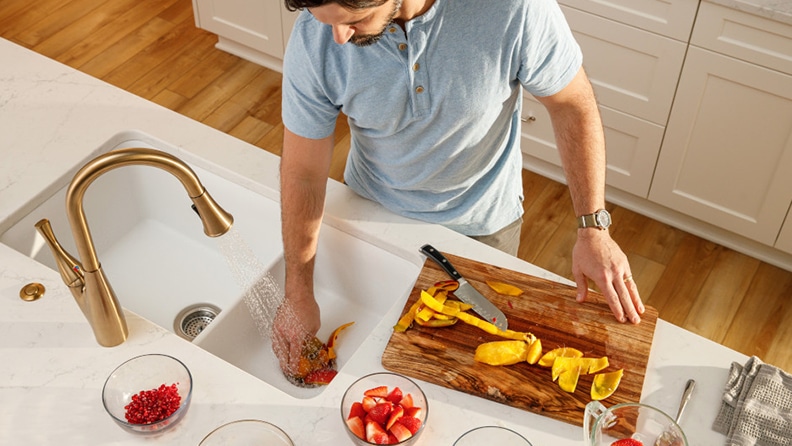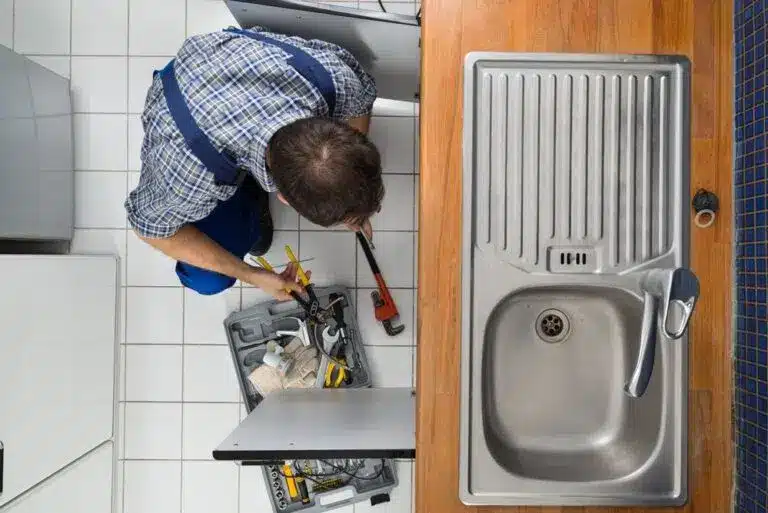Practical Techniques for Repairing a Dripping Garbage Disposal
Practical Techniques for Repairing a Dripping Garbage Disposal
Blog Article
They are making a few great pointers on Garbage Disposal Leaking From Bottom in general in the content underneath.

Garbage disposals are crucial cooking area devices that help in throwing away food waste efficiently. However, a leaking waste disposal unit can be an irritating and untidy issue to handle. Thankfully, numerous leakages can be taken care of quickly with a few straightforward steps. In this post, we will discuss exactly how to deal with a dripping garbage disposal properly.
Intro
Waste disposal unit are installed under cooking area sinks and are made to shred food waste into smaller pieces, enabling it to travel through the pipes system conveniently. While these devices are generally trusted, leaks can take place over time because of deterioration, loosened links, or damages to the system.
Usual Root Causes Of Leakages in Trash Disposals
Worn Seals and Gaskets
Seals and gaskets play an important duty in avoiding water from leaking out of the waste disposal unit. In time, these parts can degrade, causing leakages around the disposal device.
Loose Links
The connections between the garbage disposal and the plumbing system can end up being loose gradually, causing water to leakage out during operation.
Cracks or Holes in the Disposal System
Physical damage to the waste disposal unit, such as splits or openings in the housing, can additionally cause leaks.
Recognizing the Source of the Leakage
Before trying to deal with a dripping garbage disposal, it is vital to recognize the resource of the leak. This can usually be done through visual assessment or by performing basic tests.
Visual Evaluation
Check the waste disposal unit unit thoroughly for any kind of indicators of water leakage. Pay attention to areas around seals, gaskets, and connection factors.
Evaluating for Leakages
One means to examine click here for leaks is by running water through the disposal system and checking for any kind of visible indicators of leak.
Devices and Materials Needed for Taking Care Of a Dripping Garbage Disposal
Prior to starting the repair service process, gather the essential devices and materials, consisting of a screwdriver, flexible wrench, plumbing professional's putty, substitute seals or gaskets, and epoxy or patching product for fixing splits or openings.
Step-by-Step Guide to Fixing a Dripping Garbage Disposal
Turn Off the Power
Before attempting any kind of repairs, make sure that the power to the waste disposal unit device is switched off to stop the threat of electrical shock.
Locate the Leak
Recognize the specific location of the leakage and determine the cause.
Tighten Connections
Use a wrench to tighten any kind of loose links in between the disposal device and the plumbing system.
Replace Seals or Gaskets
If the leak is due to worn seals or gaskets, remove the old components and replace them with new ones.
Patching Splits or Holes
For splits or holes in the disposal unit, use epoxy or a suitable patching product to seal the damaged area.
Testing the Garbage Disposal After Repair
As soon as the repair work is full, examine the garbage disposal by running water via it to ensure that the leak has actually been settled.
Preventive Upkeep Tips to Prevent Future Leakages
To prevent future leaks, it is necessary to execute regular upkeep on your garbage disposal. This includes keeping it tidy, avoiding placing non-food items or hard items down the disposal, and regularly looking for leakages or various other problems.
Verdict
In conclusion, taking care of a dripping garbage disposal is a reasonably uncomplicated process that can be completed with standard tools and products. By following the actions outlined in this post and practicing preventive upkeep, you can maintain your garbage disposal in good working problem and avoid costly repair work in the future.
What to Do About a Leaking Garbage Disposal
A leaking garbage disposal often goes unnoticed until you confront a sopping cabinet, a foul-smelling puddle, or an audible drip-drip-drip from the unit. The fix can be frustrating, too, because the leak can stem from a number of components in the system. Fortunately, with a little sleuthing, you can zero in on the leak and—depending on the exact location—stop the icky oozing and repair the component that caused it. Worst case scenario, if it turns out that the garbage disposal must be replaced, installing a new one is a reasonable do-it-yourself task for those with basic plumbing skills. Read on to keep the cash you’d otherwise hand over to a pro.
Prepare to find the leak
Prior to testing the garbage disposal for leaks, unplug it at the wall outlet and turn off the power from the breaker box to prevent electrical shock. Then insert a watertight sink stopper into your sink drain and wipe the unit dry with a clean cloth. In any handy container, mix a few drops of food coloring into a few cups of water, and pour the dyed water onto the sink stopper to help you locate the leak.
Investigate the source
the top, where the disposal meets the sink drain the side, where the dishwasher hose or main drain pipe connects to the disposal or the bottom of the unit Inspect each of these locations while gliding a light-colored rag over the unit; the dyed water will readily show on the rag and reveal the location of the leak. If a leak isn’t immediately apparent, remove the sink stopper and pour a few more cups of dyed water down the sink drain, then check for leaks again. Leaks near the top of the unit are more likely to show themselves while the sink is plugged, while side and bottom leaks are more noticeable while the sink is unplugged.
The metal sink flange that sits directly inside the sink drain is typically sealed around the top with plumber’s putty (a clay-like sealant) and then secured from under the sink with bolts. If the plumber’s putty deteriorates, or the bolts loosen, the flange can no longer form a watertight seal between the sink drain and the disposal—which could cause a leak at the top of the unit.
To reseal the leaky flange, you must first detach the garbage disposal. Start by loosening the screws securing the main drain pipe to the disposal, then loosen the screws in the metal clamp securing the dishwasher hose to the disposal and detach the drain pipe and dishwasher hose from the disposal. Loosen the screws in the mounting ring that connects the disposal to the metal mounting assembly beneath the sink, then pull down the disposal and carefully set it on a clean, dry surface. Loosen the bolts in the mounting assembly with a wrench, then pull down the mounting assembly and set it near the disposal.

As a keen person who reads on Why Is , I think sharing that piece of content was important. I beg you take the time to share this blog if you liked it. We appreciate reading our article about Why Is .
Set Up An Appointment Report this page